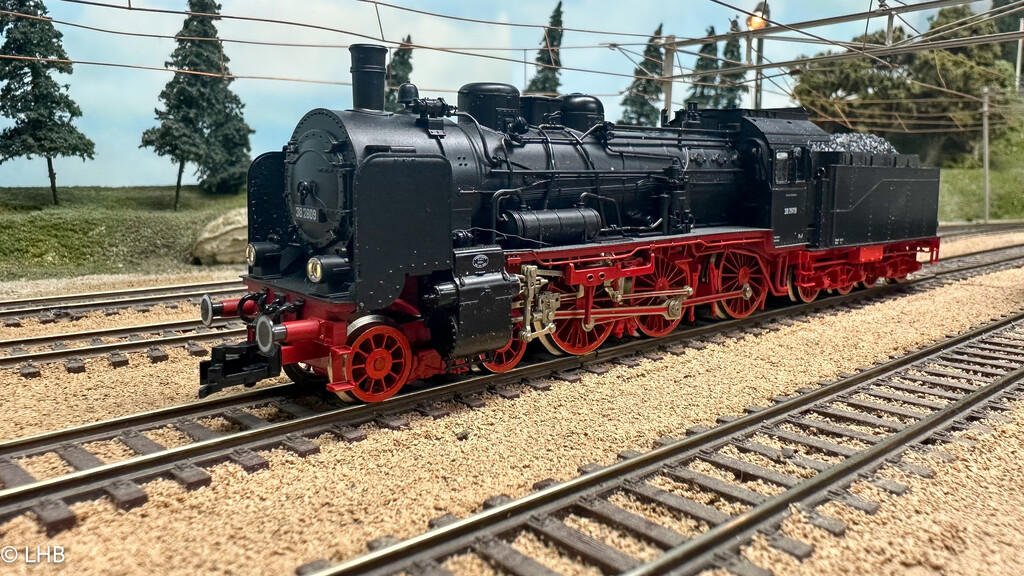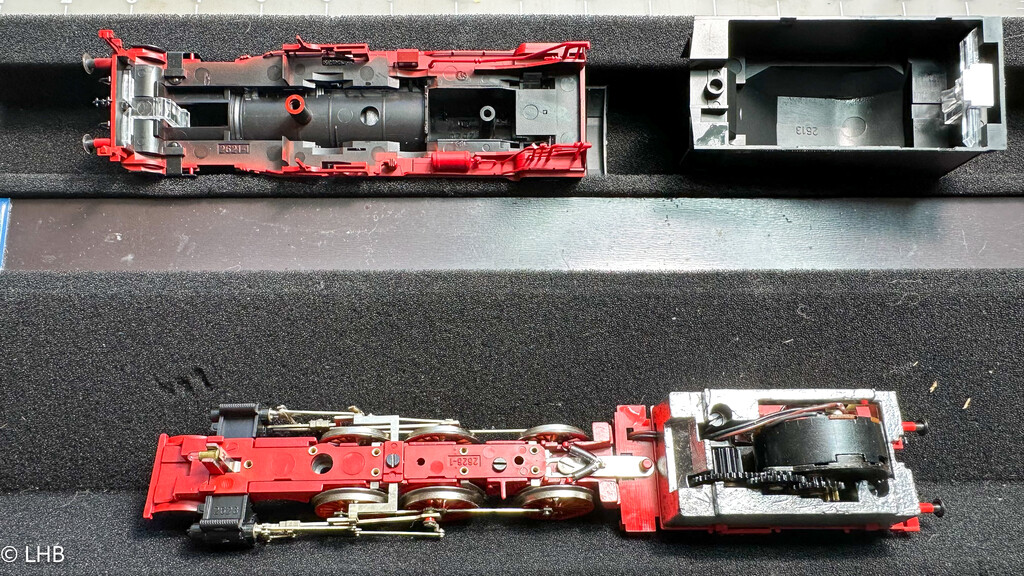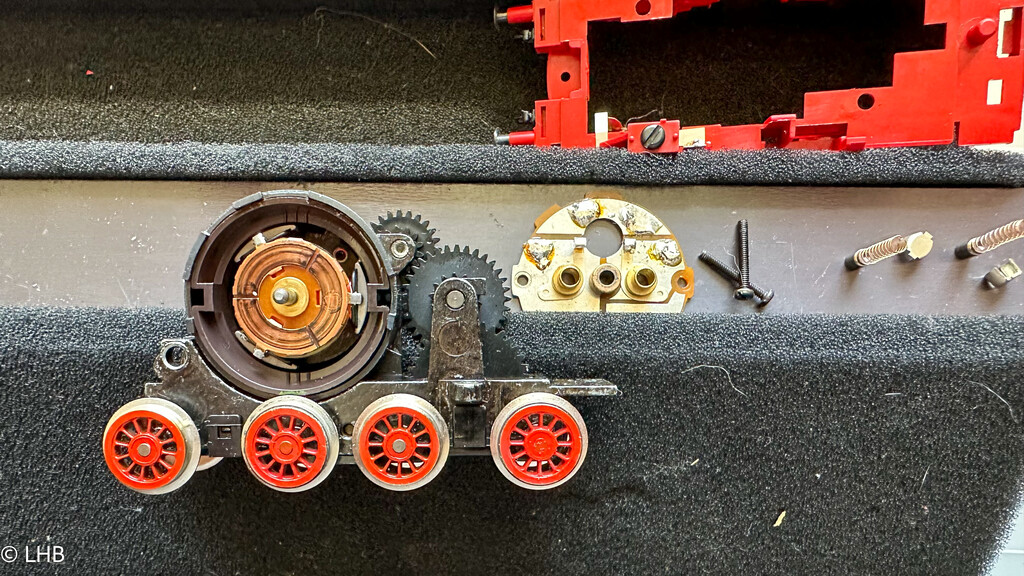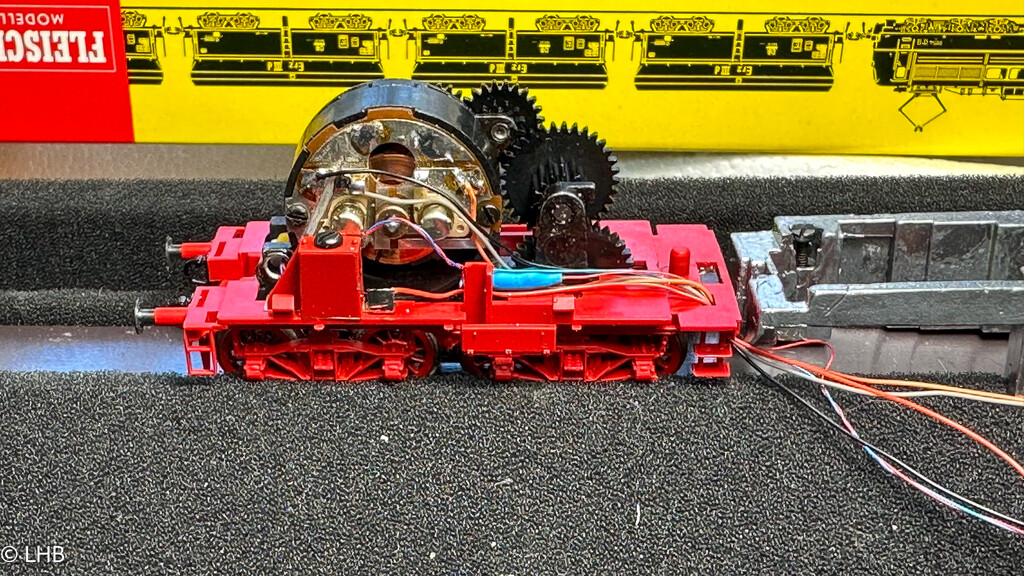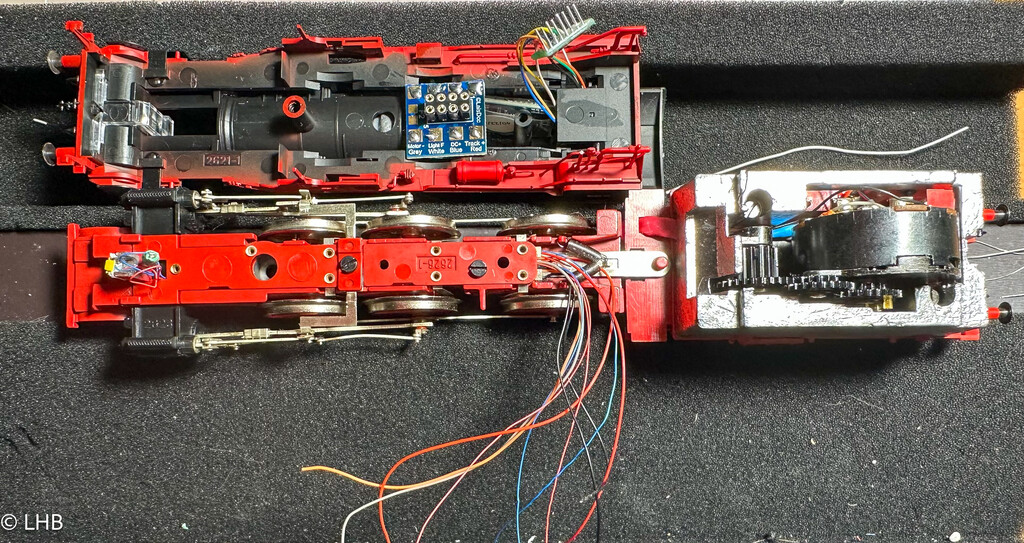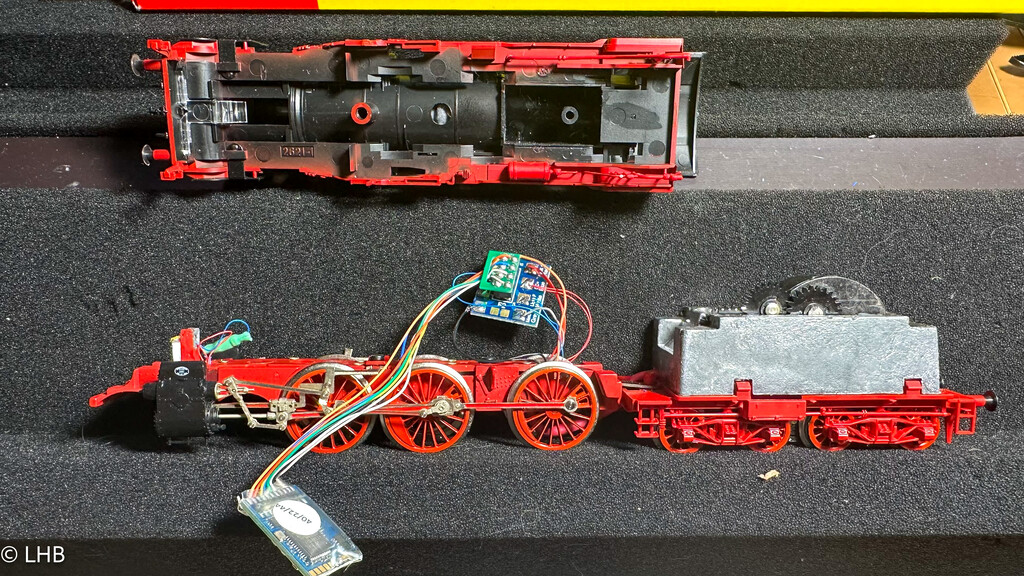Overview of the Fleischmann P8 model
The Prussian P8 is a very famous locomotive. The first were built in 1908 and some were in service in Germany until 1974. Fleischmann introduced a model of the P8 in 1980 and for its time it was a state of the art model. It has nice details and runs very well.
This particular model is Fleischman 4160 in the era II version. It models the 38 2609 whcih was built in 1919 and was in service until 1946.
DCC Install
The model pre-dates DCC and therefore some extra steps are needed to install a DCC decoder. With a few screws the body shell from both the locomotive and tender are easily removed. There is very little space in the tender so the decoder can't be placed there. There is space in the boiler which will fit a decoder. The plan is to put an ESU LokPilot 5 DCC in the boiler. Replace the lights with LEDs.
The P8 is powered by the well-known Fleischmann round motor. The motor shield needs some work, as by default it is not electrically isolated. In the photo the motor shield has been removed. With a dremel tool the left coal brush holder will be completely isolated from the rest of the shield.
The tender work is done. The motor shield is put back, the dremel work is clearly visible. The light bulb has been removed and replaced by a LED. The resistor for the LED is wrapped in blue shrink. In the original setup there are just two wires between the locomotive and the tender, in the new setup there are six. These six will be wrapped with red shrink tubing.
There the decoder is temporarily put in its spot in the boiler. An eight pin connector will be placed alongside it. Also visible is the LED replacement light in the front of the locomotive. All the wires are now ready to be soldered to the eight pin board.
All the soldering is done. What is left is to place the decoder and 8 pin board into the boiler hole and then put the locomotive back together.
A quick demo of the Fleischmann P8. First the slow running performance and then running from the roundhouse to the turntable.
